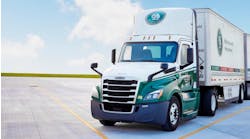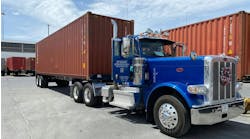A little more than 12 months remain until TEA-21 evaporates. The House Transportation and Infrastructure Committee and the Senate Environment and Public Works Committee have already held a bevy of hearings on the Transportation Equity Act for the 21st Century, to give TEA-21 its full name.
Plenty of interest groups have shown up to pitch their ideas for what would make “next TEA” tastier from their standpoint. The trucking industry will be expected to pick up a large chunk of the bill, and the price tag on many plans resembles the cost of a cup of coffee at a five-star restaurant more than at a typical truckstop.
Two large honey jars helped sweeten TEA-21 so that everyone could build more — more highways, transit, bike paths and train station renovations. First was the transfer of the 4.3¢/gal. of fuel tax revenue that formerly went into the general fund. Second was the strong growth of the economy, which pushed up all revenue sources and, in particular, sent truck sales — and truck excise taxes — soaring. Together those factors meant that the Highway Trust Fund was able to dispense roughly $10 billion more in the past three years than even the generous authors of TEA-21 had forecast.
Now the pot is nearly empty. The only money still going into the general fund is 2.5¢/gal. of tax revenue from the tax on gasohol. Even that may be about to change: The Senate voted to put the receipts into the trust fund as part of an energy bill that is now tied up in conference with the House. And trust fund revenues are now falling billions of dollars short of expectations as both motorists and truckers curbed their fuel purchases and truckers held onto their old vehicles longer.
In short, it will be very difficult to increase trust fund spending without turning to overt tax increases or general revenues. Yet nearly everyone, including truckers who see the problems with congestion and deteriorating roads daily, wants to raise some aspect of trust fund spending.
Several solutions have been proposed. The American Association of State Highway and Transportation Officials has suggested a new type of bond, in which the interest is paid in the form of an income tax credit to the bondholder. This plan would not initially increase taxes or spending; instead, it would reduce income tax receipts. Then the battle would shift to how to make up the lost income tax revenue — by cutting spending or raising other taxes.
Associated General Contractors of America (my current employer) favors indexing of fuel taxes to reflect changes in the consumer price index or some other broad inflation measure, as is done in several states, and in crediting the trust fund with the loss of revenue that results from the current 5¢/gal. subsidy granted to gasohol. Another construction group, the American Road and Transportation Builders Assn., has been pushing for an across-the-board fuel tax increase of 2¢/yr. Other groups, less friendly to trucking, are sure to propose tax increases that fall far more heavily on the industry.
The bottom line: No politician is going to come out for tax increases before Election Day. But once the new Congress is seated, there will be little time for any industry to develop a position on trust fund taxes before the authorizing committees set their spending plans. Then they'll send the bill (in both senses) to the tax-writing committees to come up with the revenue to pay for those doubtless expansive and expensive plans. The trucking industry needs to be ready or it will face taxation without representation at the Washington TEA party of 2003, and the next TEA leaves trucking paying the tab.


